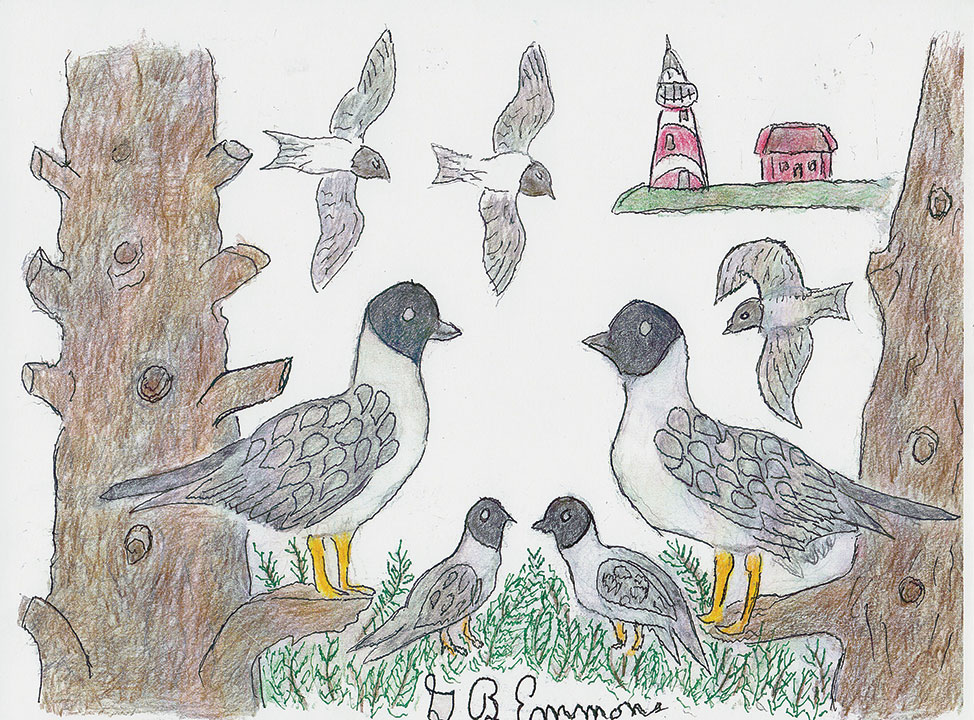The Bonaparte’s gull is named for the French zoologist Charles Lucien Bonaparte, a nephew of Emperor Napoleon. It is the only gull that nests in trees, at the base of fir, hemlocks, or pines, as illustrated. It is also the only gull that can hover to make a shallow dive underwater for fish, just like the osprey.
For the winter migration south along the coast, the Bonaparte gull fades in body color to camouflage with its changing habitat. Along the way, the swept-back top of the black head fades entirely, leaving only one dark spot behind its eye until migrating back here next summer.
Most other local gulls such as the larger herring gull, the vocal laughing gull, the ringed billed gull, and the larger black-headed gull, also morph with age in three phases while migrating. They first lighten in color as they get older. Second, the dark edges of back and wing feathers become more clearly defined in gray like the Bonaparte. Last of all shades of summer are morphed while migrating to camouflage with the winter habitat.
Surprisingly, the necessity to protect gulls with exotic plumage from extinction from the feather trade has been part of the National Audubon and Science Organization since its founding with passage of the Migratory Bird Act of 1918. It is estimated that, of the 314 species of gulls on this continent, as many as 85 of those species may be extinct by the year 2080 due to global climate change and pollution.
The term ‘seagull’ is a misnomer because many inland species like the Bonaparte gull never get to see the ocean. The Bonaparte, for instance, flocks along almost any aquatic environment, including lakes, ponds, and streams. It is a prolific survivor, able to hover and then make a shallow dive below the water’s surface, much like the osprey. Because of their small size and frantic wing beats, it often can supplement a fish diet with insects as well as wading for crustaceans.
The shrill cry of Bonaparte’s cheer, cheer, cheer heard gregariously over both the coastal and inland waterways is one of the most iconic sounds announcing the coming of spring. As the Earth is now slowly turning its face of the northern hemisphere into the direct rays of the sun, the prolific Bonaparte gull will once again appear on the wings of the Vernal Equinox.
By George B. Emmons
